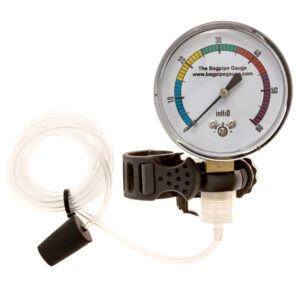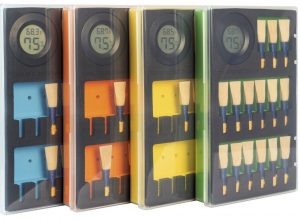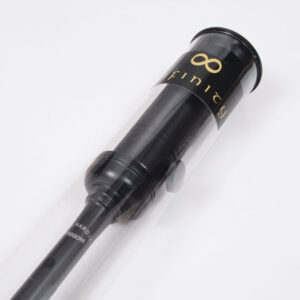
How to Achieve a World Class Bagpipe Sound
Jori Chisholm • BagpipeLessons.com
One of the great joys of playing the bagpipes is the experience of playing when the fullness and resonance of your bagpipe sound is at its full potential. It’s also one of the greatest challenges of piping, as it involves many disparate elements of equipment, reed selection, adjustment, maintenance, blowing and squeezing, timing, strategy, stamina, endurance, listening, focus and concentration. I’ve found that one of the great joys of teaching is being able to share this experience with my students: first they get to hear it and then they can experience it first-hand through their own playing.
At the world’s elite solo competitions, a brilliant, rich, full, “locked-in” drone sound with a sweet, bright and perfectly tuned chanter is required for even a chance to make the prize list. The winning players at the top events like Oban and Inverness are likely to spend as much time refining their sound as they do mastering tunes and perfecting their fingering technique. Several years ago a Gold Medal winning Scottish piper told me that “to win the big prizes, it’s not enough for your pipes to sound good. They have to sound brilliant!” Regardless of your level of experience or interest in piping competitions, a well-tuned, efficiently set-up and great sounding bagpipe that is comfortable to play should be a goal for every piper. With reasonable playing conditions, the right equipment, experienced instruction and deliberate practice, I firmly believe it’s achievable for anyone.
Steady pressure
Pipers who consistently achieve world-class tone are masters at keeping steady bag pressure. What most pipers refer to as steady blowing might be more correctly described as steady bag pressure. Blowing is intermittent but the proper use of the arm allows you to maintain a constant pressure within the pipe bag as the volume or air in the bag changes.
A piper’s ability to precisely control their bag pressure is the single most important skill needed to achieve a world-class bagpipe sound. Even the world’s best set of pipes, with perfectly set up reeds and good moisture control will not be steady if the bag pressure fluctuates even slightly. Perfectly steady bag pressure is one of the secrets of top pipers.
But your pipes, chanter, reeds and set-up only give you the potential for a world-class sound. To bring out the best of your equipment, you need to be able to maintain a perfectly steady bag pressure for the duration of your performance. This is a skill that can be learned by players of any age or experience level.
The best and fastest way to develop ultimate steadiness is to use a specially designed pressure gauge, like the BagpipeLessons.com Bagpipe Gauge, which gives you instantaneous and continuous visual feedback as you play. The Bagpipe Gauge allows you to see the tiniest pressure fluctuations so you can make adjustments. As you improve, you will learn to internalize what this feels like as you experience the sound.
To read more or purchase your own Bagpipe Gauge, visit the BagpipeLessons.com Shop.
Many pipers have been taught to blow harder on certain notes (e.g., “Blow out your high A”). The problem with this approach is that each of the drone reeds will react differently to the changing pressure. Expert pipers will often very subtly adjust their bag pressure to compensate for tuning changes, but these adjustments are only possible because of the player’s total awareness of their bag pressure and their ability to keep it perfectly steady.
For example, the pitch of the chanter often rises predictably as you play. So, you might tune your drones slightly sharp and then maintain a slightly higher pressure at the start of the tune to raise the pitch of the chanter to match. As the tune progresses, and the chanter pitch rises to match the drones, you might begin to lower the bag pressure.
Through my many years of playing and teaching, I’ve discovered that learning to keep a steady bag pressure is one of the most important and most difficult skills to master. It can be hard to know what it feels like if you’ve never done it. The quickest way to learn to achieve a steady bag pressure is to use a Bagpipe Gauge. Learn more or order your own today!
Your ability to keep rock-solid steady bag pressure is the foundation of a great bagpipe sound. Once you’ve achieved it, you’ll find your drones stay in tune longer, your chanter notes will be easier to tune with greater precision, and the changes in the pitch and sound of your pipes will be much more predictable.
Drones
A superbly made instrument gives you the potential to achieve a great sound. The performance of any set of pipes is enhanced by the hands of a skilled player, but there are many sets of pipes that due to imperfect design, inconsistent manufacturing, or inferior wood, are simply unable to achieve that locked-in drone sound — even when all other factors have been optimized. Due to the number of factors that contribute to the quality and stability of your sound, it can be hard to determine the cause.
When purchasing a new set of pipes, go with a trusted maker with a proven track record of competitive success. Great instruments (and inferior ones) can be made by both large-scale pipemakers as well as small, boutique makers. Don’t be seduced by romantic claims of lineage or marketing slogans. Look at who is playing the pipes with success.
Inexperienced but enthusiastic and well-meaning pipers often make the mistake of overspending on the non-sound producing parts of the instrument (mounts, engraving, etc.). I always recommend to my students to invest in a high-quality, less ornate bagpipe from a proven maker and combine that with quality accessories, reeds, learning tools, and instruction. This will helps ensure you are playing your instrument to its greatest potential. Of course, most pipers like the premium mounts (silver, ivory, engraving, etc.), but I encourage you to make spending money on decorative elements your last priority.
Chanter
The design and manufacture of pipe chanters has evolved more rapidly than drones. It’s not uncommon to see pipers playing sets of drones that are decades or even more than 100 years old. However, the chanters played with those drones are always newer. Pipe chanters made today are better than ever. Advances in manufacturing, including the use of computer controlled lathes and routers, allow pipemakers to precisely control the dimensions of their chanter designs and make experimental adjustments as they constantly strive for improvements.
A great pipe sound requires that each note of the chanter be perfectly set to harmonize with the constant drone presence. Precise tuning requires stability, and stability of chanter sound begins with a well-crafted chanter from high quality materials.
Wood chanters have traditionally been preferred by top solo players, but many pipe bands of all levels have played plastic pipe chanters — perhaps not only due to cost but also the inherently greater stability of plastic over wood, which ages and can change over time. When buying a chanter, look for what the top players are playing. Chanters cost much less than a set of pipes, so consider purchasing more than one and experimenting with different brands.
Reeds
While cane chanter reeds look remarkably similar to the reeds of 100 years ago, the consistently higher quality of reeds from the top makers stands apart from reeds of the past. Know that all reeds are not equal. Find out what the top players and bands are playing and try some for yourself. Select medium or easy reeds. Your goal is a reed that efficiently produces a bright, clean sound.
Synthetic drone reeds have made life easier for the modern piper. The right drone reeds in combination with a great set of drones can deliver a fantastic sound. Not all reeds work equally well in a particular set of drones. Find out what reeds work for top players who play your make of drones. Experiment and mix and match.
When selecting reeds, your goals should be:
• Reeds that deliver a full, rich sound
• Reeds that hold a stable pitch over time
• Reeds that are not overly sensitive to pressure fluctuations
• Reeds that allow for consistently clean starts and stops (note: this is more important for pipe band playing)
Many top players select different drone reeds for solo use versus band playing. Certain reed-drone combinations work well for solo playing but have a tendency to squeal or double tone on the strike in, which can be problematic for band attacks. Adjust your reeds to produce an efficient, rich and stable tone.
Humidity Control
Small changes in humidity and temperature can have drastic effects on your tone. Moisture content in the reed contributes to differences in nearly every aspect of performance: pitch, volume, strength, efficiency, stability, sound clarity and even the tuning of individual notes. In order to avoid spending too much of your time retuning and reformulating the exact tone you desire, I strongly suggest investing in a Tone Protector™ Chanter Cap and Tone Protector™ Reed Case. These innovative products maintain a constant environment for your reed, stabilizing the perfect humidity and temperature to keep your reeds playing smoothly. They're easy to use and have become a favorite among both high-level competitors as well as novice pipers. Additionally, you'll save time, money and effort from the extended lifespan of your reeds, which will last 3-4 times longer when stored in the controlled environment. While the Tone Protector™ is not required to start playing the pipes, it will give you a huge boost in your practice, regardless of your experience level. You'll be able to spend more of your valuable time practicing and learning — and enjoying every minute of it.
Moisture Control
Another great advance in piping technology has been zippered bags and moisture control systems, which give you ultimate control over moisture, allowing you to play for longer stretches of time while keeping your pipes warm and dry on the inside. It’s easy to see why zippered bags and canister systems have become so popular — they allow you to play for virtually as long as you want. Simply swap in a fresh canister when the previous one gets used up and your pipes will stay dry. Many players prefer to use moisture control systems on the drones only, allowing some moisture to get to the cane chanter reed. You can do it!
Achieving rock-solid steadiness of bagpipe sound is possible. It’s not a myth, but it can be elusive. Great bagpipe tone requires excellent, well set-up equipment and the skill needed to keep a steady pressure. Pipers with the ability to achieve a world-class sound use a superbly made instrument, the right reeds adjusted perfectly, keep steady bag pressure, have sufficient moisture control, work with the ambient conditions, and spend enough time playing to get things fully warmed up.
Good luck!

